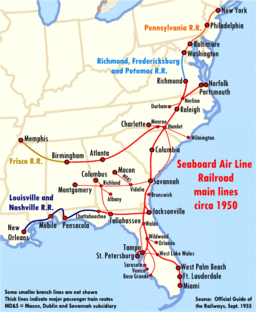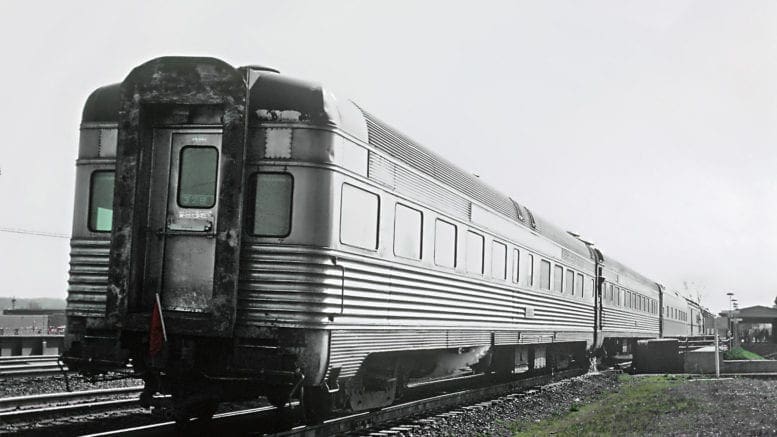This is the first installment in a periodic series that will track the Silver Comet from its beginning as an innovative passenger train line, to the Silver Comet Trail, a bustling mixed use path between metro Atlanta and Alabama.
Ralph McGill stood on the platform on track 13 of New York’s Pennsylvania Station waiting for the festivities to begin. It was noon on May 18, 1947. The veteran reporter for the Atlanta Constitution had written stories on subjects ranging from sporting events, to Cuba’s 1933 revolution, to southern race relations. Today he was covering the inaugural run of the Silver Comet passenger train, a light-weight, stainless steel, streamliner that would run from New York City to Birmingham Alabama. Even though he had been Editor-and-Chief of the Constitution since 1942, he continued to write a daily column, and this story was important enough for him to make the trip to New York.
The previous day a luncheon had been held at New York’s Roosevelt Hotel to celebrate the opening of the new line. Guests included Henry W. Anderson and L.R. Powell Jr., who were, respectively, chairman and president of Seaboard Air Line Railroad. Seaboard was the owner of the new Silver Comet service. Edward G. Budd Jr., president of the company manufacturing the innovative new stain steel rail cars was also at the luncheon.
The New York to Washington segment of the Silver Comet would be run by Pennsylvania R.R., the Washington to Richmond segment would be operated by the Richmond, Fredericksburg, and Potomac R.R., and all points south would be handled by Seaboard.

Seaboard Air Line Railroad’s main lines– By Textorus [CC BY-SA 3.0 (http://creativecommons.org/licenses/by-sa/3.0)], via Wikimedia Commons
According to McGill’s column, published the following day, Seaboard had conducted a contest to select a name for the train. “Silver Comet” was submitted by Mrs. Emmet Sprague Newman, of Savannah, Georgia.
Jean Parker, the actress who was to christen the train, arrived promptly at noon. At the time of the ceremony she was starring in a Broadway production called “Burlesque” alongside Bert Lahr, the dancer and actor who played the Cowardly Lion in “The Wizard of Oz”.
She swung the elaborately decorated ceremonial champagne bottle, and it glanced off the train with a dull thud. Her next attempt was successful, and she was spattered with champagne while the camera bulbs of photojournalists flashed around her.
The Silver Comet made the entire trip to Birmingham, slightly over 1,000 miles of rail line, with only one hitch. Earlier in the day the public had been invited to walk through the passenger compartment and view various amenities on the cars. One woman failed to leave the train when the announcement to evacuate was given, and when the train started she was an accidental stowaway. She was dropped off at the Newark, N.J. station.
This successful trip was the beginning of what was to be over 21 years of continuous service.
Sources for this article:
“Seaboard’s Silver Comet Launched on Maiden Run”, Ralph McGill, The Atlanta Constitution, May 19, 1947.
“Streamlined Train Service to South Begins Daily Run on Seaboard Air Line”, New York Times, May 18, 1947.
“Streamliner Begins 1,088-Mile Fast Run From New York to Southern Cities”, Ward Allan Howe, New York Times, May 25, 1947.
“Railroads”, New Georgia Encyclopedia, retrieved on Jan. 23, 2017 from http://www.georgiaencyclopedia.org/articles/business-economy/railroads#Decline-and-Renewal,-1920s-to-the-Present





